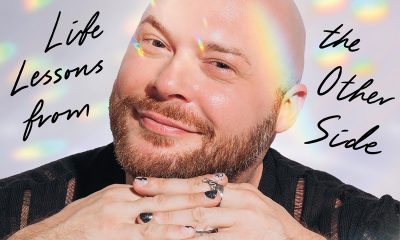LGBTQ+ Youth Mental Health
Body dissatisfaction linked with suicide risk for LGBTQ+ youth
LGBTQ youth with body dissatisfaction reported higher rates of depression symptoms, anxiety symptoms, self-harming behaviors
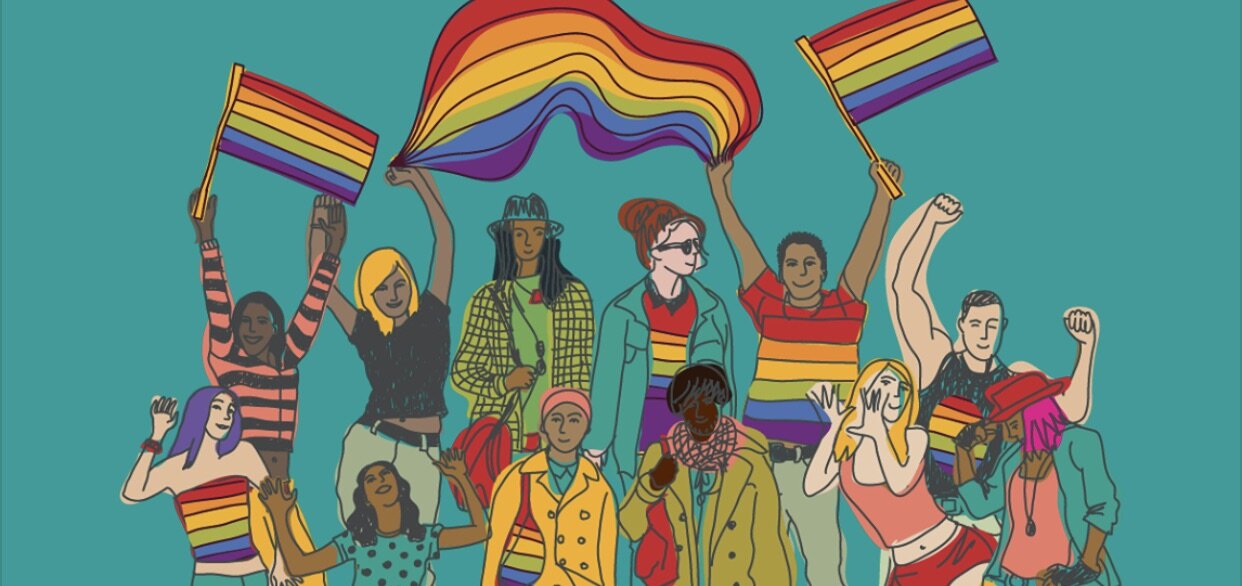
WEST HOLLYWOOD – Based on a Trevor Project survey of nearly 34,000 LGBTQ youth across the U.S., findings show that an overwhelming majority report being dissatisfied with their bodies – and rates are even higher among transgender and nonbinary youth.
The brief also found that LGBTQ youth who reported body dissatisfaction had significantly higher odds of reporting a suicide attempt in the past year.
Key Findings:
- Nearly nine in ten (87%) LGBTQ youth reported being dissatisfied with their body.
- Rates of body dissatisfaction were higher among transgender and nonbinary youth (90%) compared to cisgender youth (80%).
- LGBTQ youth with body dissatisfaction reported higher rates of depression symptoms, anxiety symptoms, self-harming behaviors, and considering suicide compared to LGBTQ youth with body satisfaction.
- LGBTQ youth with body dissatisfaction had twice the odds of reporting a suicide attempt in the past year compared to LGBTQ youth with body satisfaction.
“These findings underscore that an overwhelming majority of LGBTQ youth struggle with body dissatisfaction, something that can severely impact their mental health and contribute to higher odds of attempting suicide,” said Dr. Myeshia Price, Director of Research Science at The Trevor Project.
“As LGBTQ youth across the U.S. consume media and messages related to health and physical fitness – especially during this time of year, in relation to new year’s resolutions – we must do a better job of centering body acceptance and healthy lifestyles rather than encouraging young people to achieve a certain physical appearance. We encourage all youth-serving professionals, including educators, physicians, and health care providers, to discuss how body image may be impacting the LGBTQ youth they support.”
Read the Trevor Project’s latest research brief, LGBTQ Youth and Body Dissatisfaction:
LGBTQ+ Youth Mental Health
L.A. County officials advocate to reinstate “Press 3” crisis hotline for young queer people
After the administration ended the national 988 Suicide & Crisis Lifeline’s specialized youth line this July, officials are motioning for a localized option in Los Angeles.
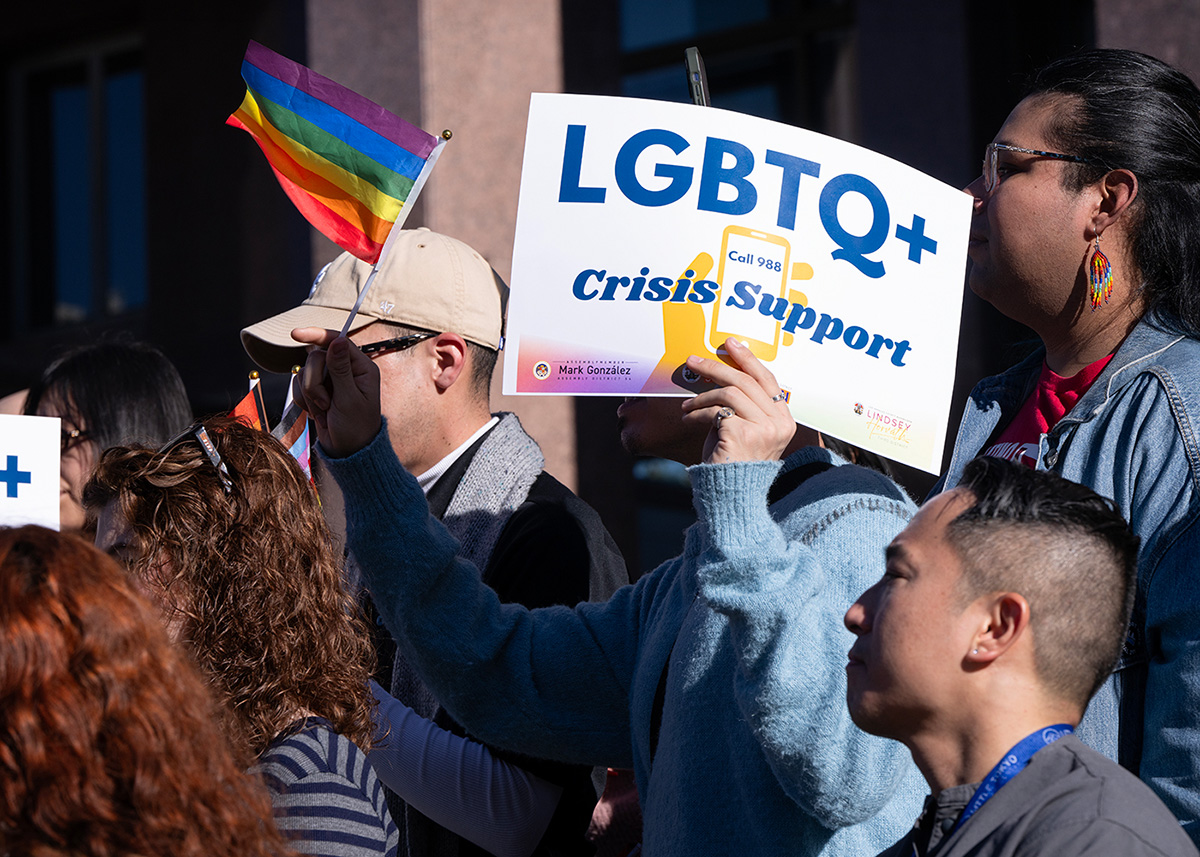
Queer youth are in danger. As the administration continues to target initiatives and programs supporting the health and safety of LGBTQ+ community members, this year saw the end of a number of critical resources, including that of the “Press 3 option” in the national 988 Suicide and Crisis Lifeline. Previously, pressing “3” after calling the 988 Lifeline would direct young queer people to a specialized line where they could reach counselors trained to support them.
For the last three years, the federal government contracted various LGBTQ+ organizations like the suicide prevention nonprofit The Trevor Project to field calls from young queer people calling the 988 Lifeline and direct them to specialized LGBTQ+ youth counseling services. In July, the administration ended these contracts — removing the “Press 3” option altogether. While young queer people can still access the general crisis line, this option allowed them a more tailored avenue to seek help, support, and resources.
The severing of this line comes at a time when rising concern over the mental health of young queer people is growing exponentially. The Trevor Project found in its 2024 national survey, which included more than 18,000 young queer people ages 13 to 24, that 39% of those surveyed seriously considered attempting suicide in the last year. This included 46% of its trans and nonbinary participants.
In the organization’s latest long-term study on the mental health experiences of LGBTQ+ young people, suicidal ideation amongst LGBTQ+ youth rose from 41% to 47% from 2023 to 2025.
As community leaders and advocates struggle to create solutions, L.A. County Supervisors Lindsey Horvath and Janice Hahn, as well as Assemblymember Mark González, are working to restore “Press 3” services. On Tuesday, the three local officials announced a series of motions and legislation they’re working on to create localized and statewide solutions that support young queer community members.
“Before this reckless cut, 1.5 million contacts were made to Press 3,” said González. “That doesn’t happen by accident — that happens because LGBTQ+ youth trust this lifeline and rely on it in their darkest moments.” González plans to submit a bill in the upcoming legislative cycle that, if approved, will fund and reinstate a statewide subnetwork that will support young queer Californians seeking help from the 988 Lifeline. The last day for bills to be introduced is Feb. 20th.
This bill joins national legislative efforts to restore the specialized queer youth service line. Senate Bill 2826 and House Bill 5434 were introduced in September and are labeled the “988 LGBTQ+ Youth Access Act of 2025.” They aim to codify “Press 3” into law and ask for sufficient funds to be directed to reinstating and operating the specialized service for young queer people.
Additionally, Supervisors Horvath and Hahn have authored a motion that supports González’s proposed bill and also encourages the county to move forward with a localized version of the “Press 3” option. This would require the County to contract crisis intervention service providers who would be able to provide counseling to young queer people using the “Press 3” option.
The motion also includes a plan that directs the Department of Mental Health to develop a proposal for a “Press 3” pilot program in L.A. County, which includes identifying contracted service providers, creating a budget and finding funding sources, as well as developing a timeline for the program’s implementation.
“Young people in our community face disproportionate challenges; taking away this critical resource is unacceptable,” said Supervisor Horvath. “We must restore this lifesaving support and make clear that every young person deserves to be heard, supported, and safe.”
Kristie Song is a California Local News Fellow placed with the Los Angeles Blade. The California Local News Fellowship is a state-funded initiative to support and strengthen local news reporting. Learn more about it at fellowships.journalism.berkeley.edu/cafellows.
Latin American News
Report finds LGBTQ+ Latin American youth face discrimination at higher rates
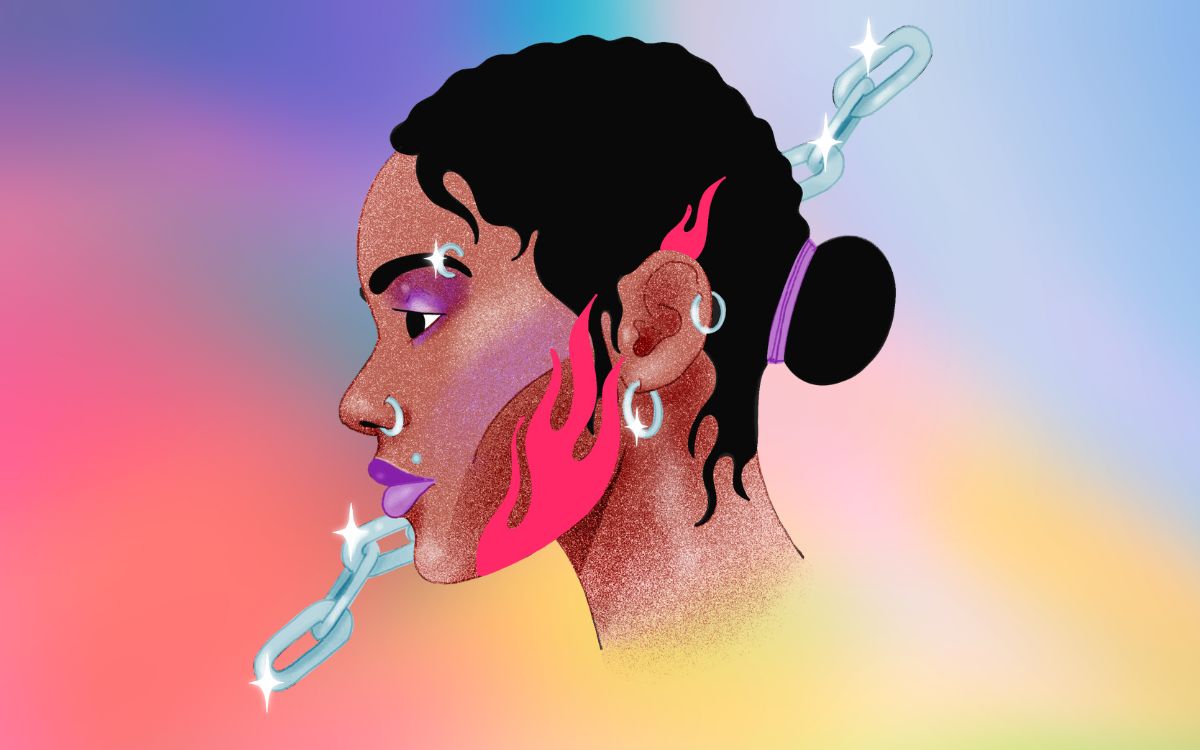
A majority of youth who are both Latin American and LGBTQ+ are proud of their identity, but many are still worried about their safety and future, according to a recent report.
In 2022, the Human Rights Campaign Foundation partnered with the University of Connecticut to survey 2,236 LGBTQ+ youth from 13 to 17 years old in all 50 states. These results were released in a 2023 LGBTQ+ Youth Report, and a separate report released this month from HRC focuses on the statistics for LGBTQ+ youth who are also Latin American.
Charleigh Flohr, Associate Director of Public Education and Research at HRC who co-created the study, says the overall resiliency of youth surveyed and the extra challenges that youth face when they have overlapping identities were the main takeaways.
For example, 70.5 percent of Latin American LGBTQ+ youth and 75.4 percent of Latin American transgender and gender-expansive youth say they experience anti-Latin American bias in the LGBTQ+ community. About 8 percent more Latin American LGBTQ+ and transgender or gender-expansive youth experience homophobia or transphobia in the Latin American community.
Youth also even struggle with building lateral relationships with others. More than 60 percent of Latin American LGBTQ+ or transgender participants say they find it difficult to make friends who are both LGBTQ+ and from the same ethnic community.
“[The statistics] underscored to me the importance of having resources and education, and leadership that meets people at the intersections of their identities,” Flohr said. “Making sure that we have things that speak directly to Latine youth because of their Latine and their LGBTQ+ identities.”
HRC’s survey addresses the ways the attitude toward Latin American LGBTQ+ youth within their communities, also impact their hopes and fears. According to the report, 67.6 percent of Latin American LGBTQ+ youth and 76.4 percent of Latin American transgender and gender-expansive youth fear they will face discrimination in the future because of their LGBTQ+ identity.
Fears about joining the workforce are substantiated, not only by their current experiences of discrimination, but also by separate data surveying adult LGBTQ+ workers. A study from the Williams Institute at UCLA School of Law, showed that LGBTQ+ employees who are out to their coworkers are three times more likely to experience discrimination and almost half of LGBTQ+ employees report experiencing discrimination or harassment at work because of their sexual orientation or gender identity during their lifetime.
When adding race as a factor, LGBTQ+ employees of color were also more likely to report experiencing discrimination than white LGBTQ+ employees. Transgender and nonbinary employees and LGBTQ+ employees of color were about twice as likely as cisgender LGBTQ+ and white workers to experience discrimination or harassment in the past year.
“More robust protections, including monitoring and enforcement, are needed to ensure that LGBTQ+ people, particularly transgender and nonbinary people and LGBTQ+ people of color, are fully protected from discrimination and harassment in the workplace,” said Brad Sears, lead author and founding executive director at the Williams Institute.
Flohr said the 24.5 percent of youth who said they wish they were not LGBTQ+, also overlapped with those 90 percent who said they are proud to be both Latin American and LGBTQ+. She inferred from these results, that the sentiment of Latin American youth is less that of self-hate and more the desire to move freely in the world without the challenges queer and transgender people face.
“I think that it’s important to understand the experiences of trans youth, including Latina trans youth, within the context of the political and cultural climate right now across state legislatures in the United States,” Flohr said. “Someone who is transgender like myself might wish they aren’t transgender so they don’t have to worry about how they’re going to be treated if they go use a public restroom. I think those are all really universal experiences of all LGBTQ+ people.”
More than 650 anti-trans bills have been considered by U.S. legislators in the past year, according to independent research from the Trans Legislation Tracker. Of those hundreds of bills, 44 have been signed into law, including restrictions on curriculum and bathroom usage. One law in Iowa, SF 2435, prohibits the establishment of Diversity Equity and Inclusion offices at all.
Yalitza “Yaya” Vasquez-Lopez is a community organizer at MiSELA, an LGBT Youth Center in Bell, Calif., and she also works at St. Bede’s Episcopal Church. She said that despite micro-aggressions from other employees and being the only transgender Latina working at the church, Vasquez-Lopez said she feels welcomed by details at the church, such as having a woman reverend, a booklet for attendees sharing what to expect throughout the service and the display of a TGI-inclusive pride flag.
In the past, Vasquez-Lopez worked as a member of Mariachi Arcoiris, the only LGBTQ+ Mariachi in the world.
Vasquez-Lopez said her mostly-positive experiences in workplaces have stemmed from specifically pursuing opportunities to work with other LGBTQ+ people of color. She advised youth to do the same and find inclusive workplaces early on.
“I think even just that representation of visiting an organization and seeing the synergy of a queer staff is such a good resource for kids. I wish I would have done that a little bit more when I was growing up,” Vasquez-Lopez said. “I think I could have seen the value of a queer-forward staff as a young, growing professional.”
Flohr says she hopes organizations will remember that they may be serving Latin American LGBTQ+ youth without knowing. She also shares that using affirming language around both Latin American and LGBTQ+ issues, is meaningful and impactful.
Despite Latine LGBTQ+ youth’s fears and doubts, Flohr says another memorable result from the study, was reading about the hope that youth displayed in their responses.
“Many [Latin American] youth know that a future for them is possible and they want those futures, whether it’s going to college or pursuing careers that are right for them,” Flohr said. “How successful they can be in those things … is also dependent on institutions and adults in those institutions to deliver the appropriate care and resources and education to them.”
LGBTQ+ Youth Mental Health
CDC: A quarter-plus of U.S. high school students identify LGBTQ
The CDC reported that the number of students in the U.S. who identify as LGBTQ has increased from 11% in 2015 to 26% in 2021
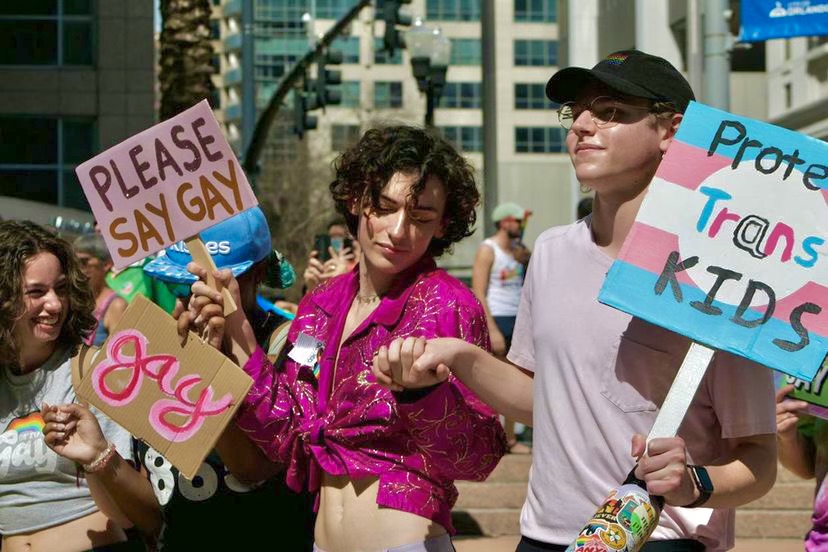
ATLANTA – A new report released last week from the Centers for Disease Control and Prevention (CDC) shows over one out of every four high school students in the United States identifies as LGBTQ.
Using data from the bi-annual Youth Risk Behavior Surveillance System, a set of surveys that track behaviors that can lead to poor health in students grades 9 through 12, the CDC examined:
- Student demographics: sex, sexual identity, race and ethnicity, and grade
- Youth health behaviors and conditions: sexual, injury and violence, bullying, diet and physical activity, obesity, and mental health, including suicide
- Substance use behaviors: electronic vapor product and tobacco product use, alcohol use, and other drug use
- Student experiences: parental monitoring, school connectedness, unstable housing, and exposure to community violence
The current report was gathered using data collected in 2021 which found that 74.2% of American high school students identified as heterosexual. The Youth Risk Behavior Surveillance System (YRBSS) interviewed 17,508 students from 152 schools across the U.S.
Results also showed that 3.2% of students identified as either gay or lesbian, 5.2% identified as “questioning” and 12.2% identified as bisexual. About 3.9% of students answered the question by saying they were “other” and 1.8% claimed they didn’t understand the question.
YRBS results help monitor adolescent health behavior changes over time, identify emerging issues, and plan and evaluate programs to support the health of youth. YRBS data are used by health departments, educators, lawmakers, doctors, and community organizations to inform school and community programs, communications campaigns, and other efforts.
The YRBSS was designed to:
- Determine how often unhealthy behaviors occur
- Assess whether unhealthy behaviors increase, decrease, or stay the same over time
- Provide data at the national, state, territorial and freely associated state, tribal, and local levels
- Provide data comparing different groups of adolescents
- Monitor progress toward achieving the Healthy People Objectives and other program goals
Based on the ten year span in studies between 2011 and 2021, the CDC reported that the number of students in the U.S. who identify as LGBTQ has increased from 11% in 2015 to 26% in 2021. That increase “might be a result of changes in question wording to include students identifying as questioning,” the report claims.
About 57% of those high school students in the CDC’s data said that they have not had any sexual contact in their lives, while 34.6% of those students said they had sexual contact with someone of the opposite sex.
Just 2.4% of students reported that they’ve had sexual contact with the same sex, and 6% said that they’ve had sexual contact with both sexes, according to the CDC.
Mirroring the CDC numbers in the YRBSS, the results of recent Gallup polling revealed that 7.2% of U.S. adults now identify as LGBTQ+ broken down by age grouping:
- -19.7% of Gen Z (ages 19-26)
- -11.2% of millennials, (ages 27-42)
- -3.3% of Gen X (ages 43-58)
- -2.7% of Baby Boomers (ages 59-77)
- -1.7% of the Silent Gen (ages 78+)
Read the full report: (Here)
LGBTQ+ Youth Mental Health
Public health crisis: 50% of trans & nonbinary kids consider suicide
LGBTQ+ young people who experienced victimization because of their orientation or identity — including being physically threatened or harmed
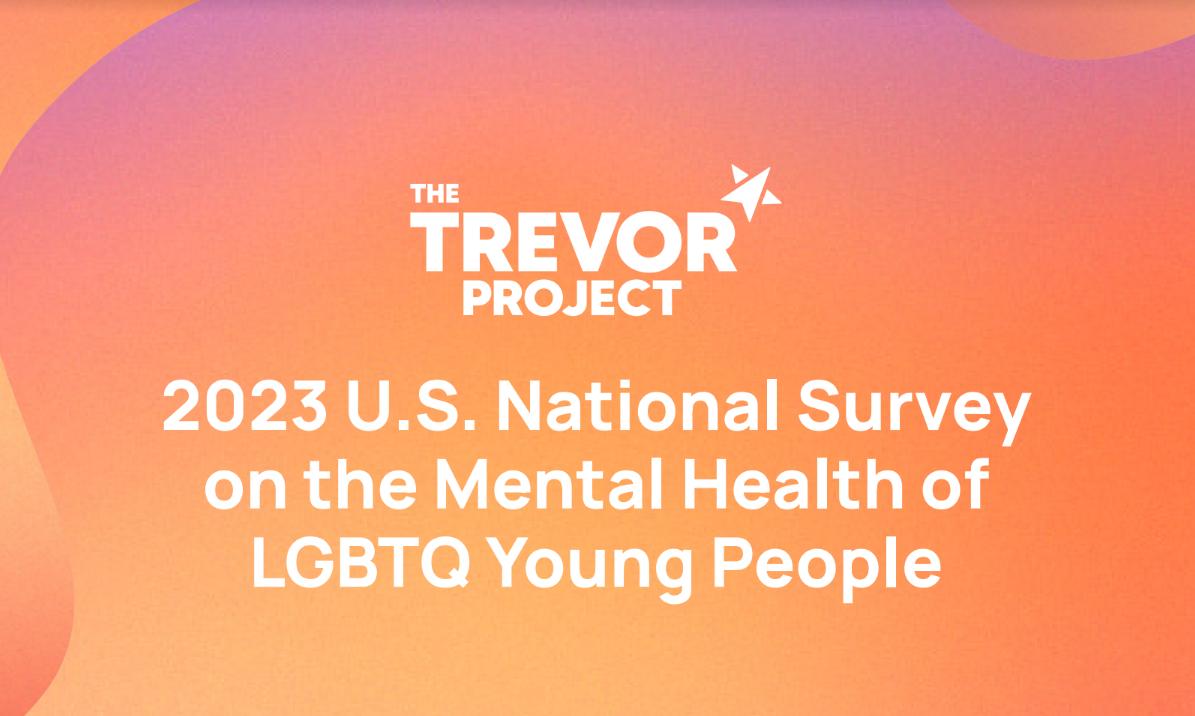
NEW YORK – The nation’s leading suicide prevention organization for LGBTQ+ youth released the results of its latest survey of queer young people ages 13 to 24 Monday, and the findings by The Trevor Project should set off alarm bells.
The survey of 28K youth nationwide, conducted last fall, underscores the negative mental health impact of anti-LGBTQ+ legislation and policies. Among the key findings:
- 41% of LGBTQ+ young people seriously considered attempting suicide in the past year — and those who are transgender, nonbinary, and/or people of color reported higher rates than their peers.
- 56% who wanted mental health care in the past year were not able to get it.
- LGBTQ+ young people who had access to affirming homes, schools, community events, and online spaces reported lower rates of attempting suicide compared to those who did not.
- Transgender and nonbinary young people reported lower rates of attempting suicide when all of the people they live with respected their pronouns and/or they had access to a gender-neutral bathroom at school.
- LGBTQ+ young people who experienced victimization because of their orientation or identity — including being physically threatened or harmed, discriminated against, or subjected to conversion therapy — reported more than twice the rate of attempting suicide in the past year compared to those who did not have any of these anti-LGBTQ+ experiences.
- Nearly 2 in 3 LGBTQ+ young people said that hearing about potential state or local laws banning people from discussing LGBTQ+ people at school — also known as “Don’t Say Trans or Gay” laws — negatively impacted their mental health.
“This is a public health crisis — and it’s preventable,” said Kasey Suffredini, The Trevor Project’s vice president of advocacy & government affairs. “Our government must work from the top down to curb risk factors like violence and discrimination and increase access to essential health care, safe schools, and support systems. Yet, far too many lawmakers at the state level are working overtime to push a dangerous political agenda that will jeopardize young lives. We understand that some of these issues can seem complicated for people who’ve never met a transgender person, but the impact of victimization on our young people is clear and dire.”
Annual report on mental health of LGBTQ people ages 13 to 24 amplifies need for affirming homes and schools
This is Trevor’s fifth annual national survey, and the political climate appeared to be a significant factor in the findings. With more than 600 anti-LGBTQ+ bills introduced this year alone, researchers found that LGBTQ+ young people continue to report significantly high rates of mental health challenges and suicide risk. Also, experiences of anti-LGBTQ+ stigma and victimization contributed to the disparity when compared to the experiences of straight and cisgender youth.
Their research, says a spokesperson, also underscores the protective nature of affirming homes and schools, the importance of transgender-inclusive policies, and the ways in which schools, families and lawmakers can show support for LGBTQ+ young people.
For more results and other information, click here for The Trevor Project survey.
LGBTQ+ Youth Mental Health
New study: 1 in 3 gay, lesbian, & bi youths having trouble sleeping
In the overall study only 13.5% of straight-identifying adolescents self-reported trouble falling or staying asleep

BETHESDA, Md. – A study published last month by the National Library of Medicine and online LGBT Health magazine revealed that sexual minority status may be linked to sleep disturbance in early adolescence.
The study sample was 8,563 adolescents 10- to 14-years-old, of which 4.4% identified as sexual minority individuals. Sexual minority status was associated with self-reported trouble falling or staying asleep with 35.1% or 1 in 3 self-reported trouble falling or staying asleep. The purpose of the study was to examine associations between sexual minority status (e.g., gay, lesbian, or bisexual) and sleep problems in a demographically diverse, national sample of U.S. early adolescents.
In the overall study only 13.5% of straight-identifying adolescents self-reported trouble falling or staying asleep.
30.8% of questioning youths — those who answered “maybe” to being gay, lesbian or bisexual — reported problems with getting a full night’s rest.
“Sleep is incredibly important for a teenager’s health,” said lead author Jason M. Nagata, a professor of pediatrics at the University of California, San Francisco to NBC News. “There’s growth spurts and hormonal changes that help you develop normally.”
Nagata and the research team noted that the association between sexual minority status and trouble falling or staying asleep was partially mediated by greater depressive problems, more family conflict, and less parental monitoring, whereas the association between sexual minority status and caregiver-reported sleep disturbance was partially mediated by greater depressive problems, higher stress, and greater family conflict.
The research teams also reported that future research could test interventions to promote family and caregiver acceptance and mental health support for sexual minority youth to improve their sleep and other health outcomes.
Nagata’s team which included Christopher M. Lee, Joanne H. Yang, Orsolya Kiss, Kyle T. Ganson, Alexander Testa, Dylan B. Jackson, Abubakr A.A. Al-shoaibi, and Fiona C. Baker utilized data from the 2018-2020 Adolescent Brain Cognitive Development Study, with focus on LGB youth.
Existing research already points to increased sleep issues among sexual minorities, but Nagata told NBC News he believes this is the first time gay, lesbian and bisexual youths have been the focus.
“This is such a volatile period, both physically and mentally,” he said. “Teens are particularly vulnerable to the opinions of their peers, so it’s a high-risk group for mental health problems and suicide.”
Further research could illuminate other factors fueling sleep disorders among queer youths, he said.
“LGB kids experience more substance use than their peers, for example, which can alter sleep cycles and impair sleep,” he said.
Co-author Kyle T. Ganson, a professor at the University of Toronto’s Factor-Inwentash Faculty of Social Work, pointed out that parents can also help by being actively involved in their children’s lives and supportive of their identities and any feelings they may be exploring.
“Adolescent development is a challenging time for many given the social pressures and physical, psychological and emotional changes that occur,” Ganson told NBC News in a statement. “Understanding this process and being present to support it is crucial for positive health outcomes.”
A 2018 study of adults, published in the journal Psychology of Sexual Orientation and Gender Diversity, covered a sample of about 15,000 participants, most of whom were straight, with 2.1 percent identifying as gay and 1.3 percent identifying as bisexual. The survey had two questions focused on insomnia, with additional questions focused on the stresses the individuals faced.
Amongst respondents, it was LGB people who reported more troubles both falling asleep and staying asleep. Much like other sleep studies, women also reported a higher instance of sleep issues than men.
Likewise, LGB respondents reported higher levels of stress in their lives, in particular stress caused by familial rejection, the Journal reports.
The study suggests that treating insomnia for LGB people may be a useful step in improving health, but does recommend further study.
Proper rest is one of the keys to health and well-being. It is recommended that those between the ages of 18-64 get seven-nine hours of sleep per night.
LGBTQ+ Youth Mental Health
Trans community fears wave of retaliatory attacks
Gender affirming care is on the chopping block in 11 states, including — most recently — Iowa and Kentucky


By Sunita Sohrabji | PORTLAND, Me. – Physical violence and verbal abuse are the norm for many transgender youths. This week, as news emerges that 28-year Audrey Hale — who killed six people, including three 9-year-old students at Nashville, Tennessee’s Covenant School — was transgender, the LGBTQIA community fears it will be targeted for retaliatory attacks.
Susan Maasch, director of the Trans Youth Equality Foundation in Portland, Maine, told Ethnic Media Services: “We were called yesterday by a man who was screaming at us. ‘What are you going to do with your donations? Are you going to use them to train kids to kill Christian children?’ This was very scary.”
“We’ve got scared children, scared families, scared organizations who are afraid of being targeted, but there’s no support,” she said. Maasch said she called the FBI to report the hateful phone call but could not get past a receptionist. “I will talk to local police, but I’m not sure what will come of that. The response just isn’t there.”
The FBI and the Justice Department did a briefing this week with organizations who support transgender youth, advising them how to keep safe during a possible uptick in violence against the community.
“This is a terrible, scary, and intimidating time for transgender people and their loved ones,” said Maasch. “The fact that this shooter was transgender is going to be used and abused by politicians and others.”
She noted the current climate of hostility in many states, which are demonizing trans individuals via legislation and rhetoric. “These are right-wing attacks by uninformed people. There’s a sense of going backwards.”
Kids in red states are having a particularly rough time, said Maasch, noting that few resources are available to them.
Maasch spoke of the need for gender affirming care, noting there is no cure for body dysphoria. “If you don’t treat, that’s when you get into danger. Some children go dark when you try to will away their gender. They begin to lose hope, and become depressed and anxious.”
Gender affirming care is on the chopping block in 11 states, including — most recently — Iowa and Kentucky. Other states which ban gender affirming care for minors include: Alabama, Arkansas, Arizona, Florida, Georgia, Mississippi, South Dakota, Tennessee and Utah.
The US Department of Health and Human Services defines gender affirming care as patient-centered treatment which aligns individuals’ outward, physical traits with their gender identity. “Gender diverse adolescents, in particular, face significant health. disparities compared to their cisgender peers,” notes HHS.
Maasch encouraged children who are struggling with gender identity to reach out to her organization TYEF or The Trevor Project, which has a good track record of supporting transgender youth. Trusted individuals, including older siblings or an aunt, can also be a source of support, she said.
Physical violence is the norm for many transgender youth. Last June, a transgender student in Kalama, Washington was kicked repeatedly by another student wearing steel-toed boots, and had to be hospitalized. A transgender teen in Pompano Beach, Florida has been savagely attacked twice. The teen was kicked, beaten and spat upon relentlessly, the first time when they were in 6th grade.
In March, eight students savagely beat a transgender student on a Tulsa, Oklahoma school bus.
Stella Tice spent much of her young life trying to fit into the norms of the gender to which she was assigned at birth.
“I always felt I was different from everyone else,” Tice, 22, told EMS. “The early stages of dysphoria hit especially hard during puberty. I didn’t have any language or knowledge to express it,” said Tice, who grew up in rural Klamath Falls, Oregon, and attended church every Sunday with her family, as well as a religious youth group every Wednesday evening.
Tice says she was bullied a lot in school. But she never told high school administrators or even her parents about what she was experiencing. “It made me uncomfortable to share my feelings because I was worried about being ridiculed by my peers.”
About 16 months ago, with the support of her partner, Tice began transitioning into a woman. Telling her parents was initially difficult. “It was a rough start, but they definitely did a lot of learning. I come from a very tight-knit family. And they didn’t want to lose me.”
Tice’s older brother turned out to be one of her strongest supporters. “’Wherever you end up, you have my support 100 percent,’ he told me.”
Tice and her partner live in Eugene, Oregon, which has a large LGBTQIA community, so the young woman was able to access the support she needed during her transitioning process.
Tice urged trans youth to turn to sub-Reditts, Twitch transgender streamers, and TikTok transgender content creators, to get a sense of community and support.
“I know this is a cliche, but it will and does get better,” she said.
*****************************************************************************************

Sunita Sohrabji is a contributing editor at Ethnic Media Services.
*************
The preceding article was previously published by Ethnic Media Services and is republished with permission.
LGBTQ+ Youth Mental Health
Mental Health of Black trans & nonbinary young people is a crisis
Black trans & nonbinary youth experience high rates of victimization & attempts by others to change their sexual orientation/gender identity
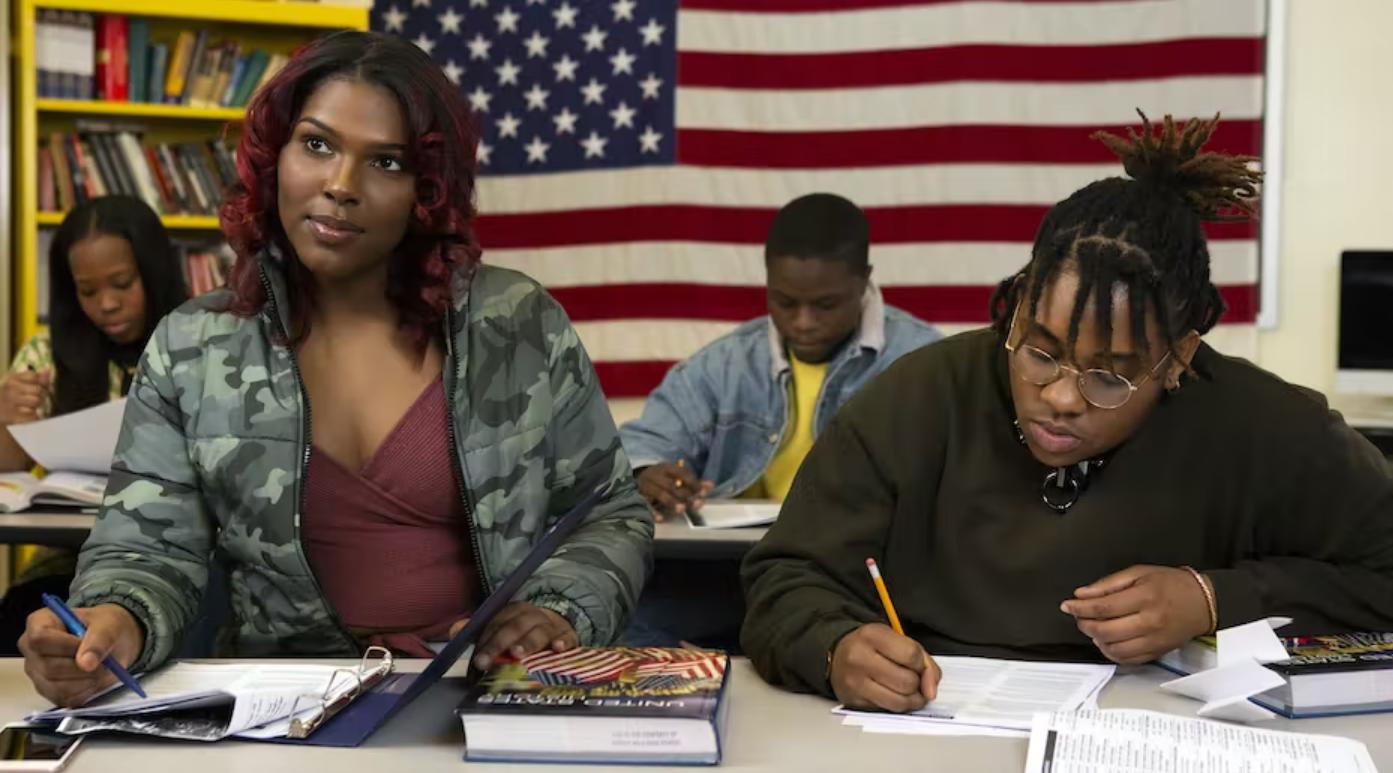
NEW YORK – The Trevor Project’s research team released a new study on the mental health and suicide risk of Black transgender and nonbinary youth Tuesday. Based on a survey of nearly 34,000 LGBTQ youth across the nation, the findings show that one in four Black trans and nonbinary young people reported a suicide attempt in the past year — more than double the rate compared to their Black cisgender LGBQ peers.
Key Findings:
- One in four (25%) Black transgender and nonbinary young people reported a suicide attempt in the past year — more than double the rate of suicide attempts compared to Black cisgender LGBQ young people (12%).
- Black transgender and nonbinary young people reported higher rates of all indicators of poor mental health compared to their Black cisgender LGBQ peers.
- Black transgender and nonbinary young people experience higher rates of victimization, attempts from others to change their sexual orientation or gender identity, and housing instability compared to Black cisgender LGBQ young people.
- Black transgender and nonbinary young people with high social support from their family had 47% lower odds of reporting a suicide attempt in the past year.
LGBTQ+ Youth Mental Health
Female & LGBQ+ students experiencing alarming rates of violence
Poor mental health, suicidal thoughts are increasing- Overall, young people experiencing a level of trauma/distress that requires action
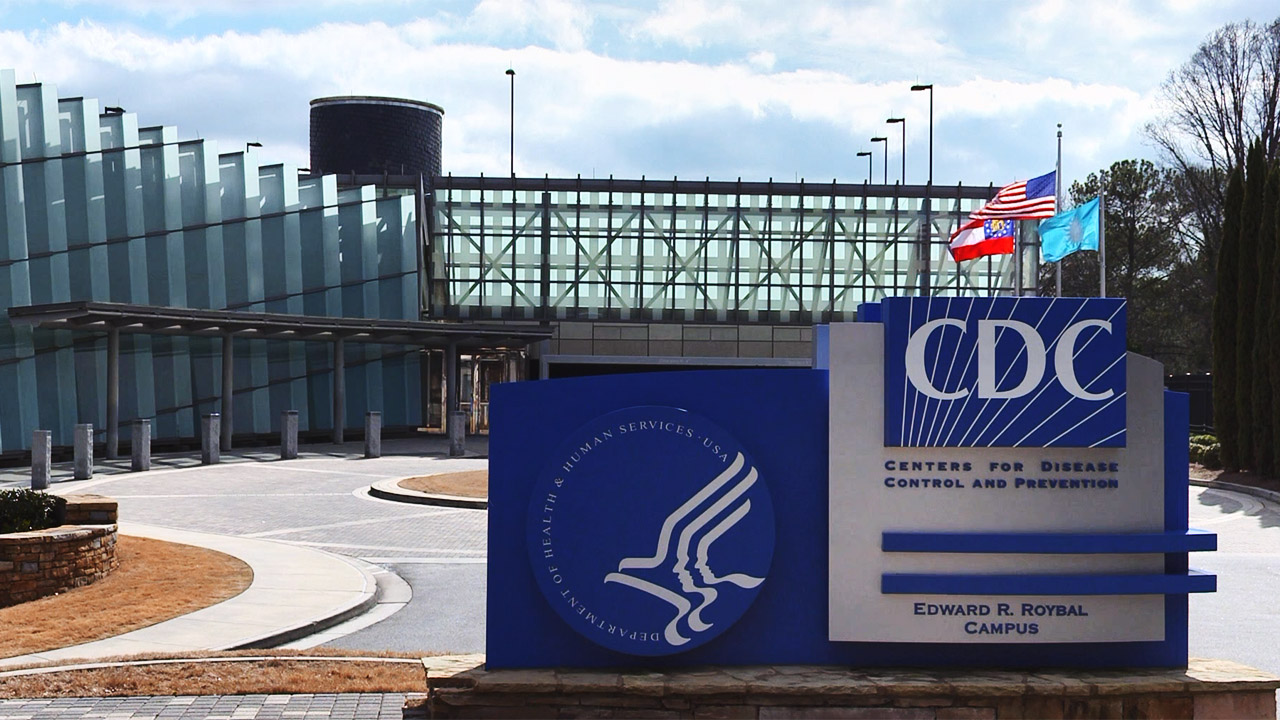
ATLANTA – The Centers for Disease Control and Prevention (CDC) released its Youth Risk Behavior Survey Data Summary & Trends Report: 2011-2021, in which the CDC disclosed alarming data that documented that rates of violence and worsening cases poor mental health, continued to rise among female and LGBQ+ adolescents.
The data found poor mental health and suicidal thoughts and behaviors are increasing for nearly all groups of youth and experiences of violence, including sexual violence, are not declining and in some cases are increasing.
Overall, young people are experiencing a level of trauma and distress that requires action.
There are also differences among groups of students.
- Female students and LGBQ+ students are experiencing alarming rates of violence, poor mental health, and suicidal thoughts and behaviors.
- The rates of experiencing bullying, sexual violence, poor mental health, and suicidal thoughts and behaviors indicate a need for urgent intervention.
- Some differences between students across racial and ethnic groups have lessened, but there are still concerning disparities.
Note: Because the 2021 national YRBS did not have a question assessing gender identity, this report does not highlight data specifically on students who identify as transgender.
If you or someone you know is struggling or in crisis, help is available. Call or text 988 or chat https://t.co/aLLohASutY. @988Lifeline
— CDC (@CDCgov) February 13, 2023
Top Findings on Mental Health & Suicide Risk from the report:
- 45% of LGBQ+ students seriously considered attempting suicide in the past year, compared to 15% of straight students
- 22% of LGBQ+ students attempted suicide in the past year, compared to 6% of straight students
- 37% of LGBQ+ students made a suicide plan in the past year, compared to 12% of straight students
- Nearly 70% of LGBQ+ students experienced persistent feelings of sadness or hopelessness, compared to 35% of straight students
- 52% of LGBQ+ students experienced poor mental health during the past 30 days, compared to 22% of straight students
The YRBS report represents a nationally representative sample of more than 17,000 students in grades 9–12 attending public (including charter schools), Catholic, and other non-public schools in the 50 states and the District of Columbia. Collected in fall 2021, these data also represent the first YRBS data collected since the start of the COVID-19 pandemic.
Statement from Dr. Ronita Nath, Vice President of Research at The Trevor Project:
“These alarming data further emphasize why The Trevor Project exists and what we already knew to be true: queer students face disproportionate rates of victimization, and this directly contributes to their higher rates of poor mental health and suicide risk. Queer students are not inherently prone to these challenges because of their identities.
“At a time when schools are increasingly being turned into political battlegrounds in the ‘Culture War,’ we must remember that real, young lives are at stake. Our schools must be safe places where all students can learn and find support, not a consistent source of bullying and discrimination.
“Our governments and school officials must respond to this public health crisis with comprehensive suicide prevention strategies tailored to meet the unique needs of students who are LGBTQ and/or are people of color. What they should not be doing is censoring curriculums, banning inclusive books, and discouraging students from confiding in teachers and counselors about their identities.”
According to the CDC report, data show that school environments, which are influenced by how teachers manage classrooms, programs to support positive youth development, and policies and practices that support LGBTQ+ students, can have a strong and lifelong effect on areas where youth are struggling now, including mental health.
Other findings included:
- Risky sexual behaviors are decreasing, but so are important protective behaviors like condom use, HIV testing, and STD testing.
- Substance use is generally decreasing, but still too high.
The CDC also noted that the data show that many of the same behaviors and experiences that were moving in the wrong direction before the pandemic, like poor mental health, continued to worsen, and highlight the challenges young people continue to face.
Read the full report here: (Link)
LGBTQ+ Youth Mental Health
Caroline Cruz responds to media coverage
The 14-year-old Cruz was suffering from self-inflicted stab wounds and was rushed to hospital Tuesday night

HOUSTON – In a scripted TikTok post, Caroline Cruz, the 14-year-old daughter of Texas Republican U.S. Senator Ted Cruz responded to the intense media coverage and interest in her medical emergency Tuesday evening at the family’s home in the toney River Oaks neighborhood of Houston.
“I wanted to address this on my own because the media is causing my mental health to be exploited for their gain. I also don’t enjoy the assumptions on why I did what I did. No, it had nothing to do with my sexuality or my father. I’m not suicidal but I am experiencing some mental issues. I’m working through it and getting the help I need. Thank you so much for all the support and love, it means a lot to me. But the most traumatizing part of this experience is how public it’s been,” Cruz told the viewers of her post.
@_caro_iguess_ before yall ask yes i am reading from a script, i had a lit ti say and i wanted to day it right so im sorry if it sounds superficial THANK YOU @finn ♰ @Kat for being the best friends ever
♬ son original – caroline?!













